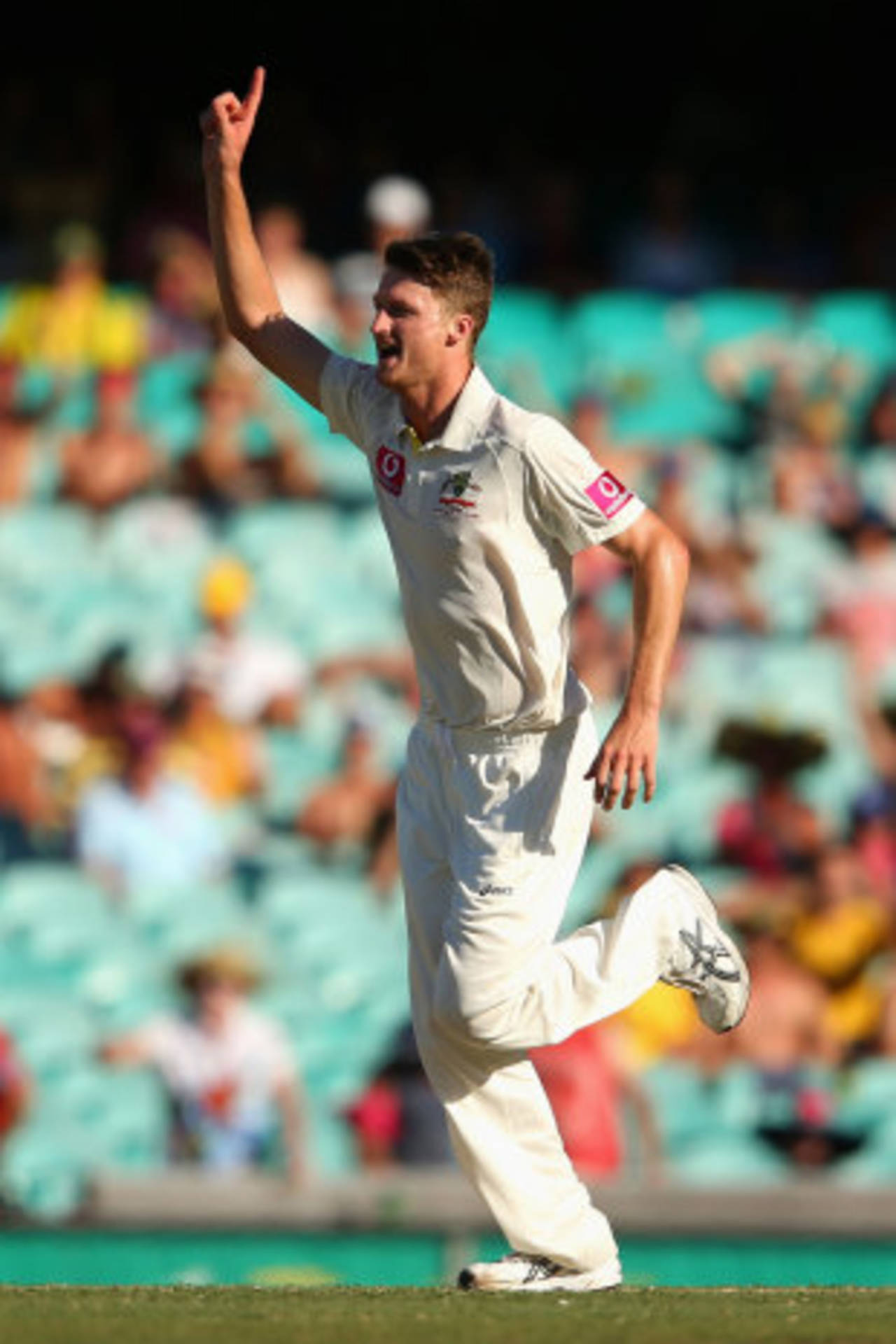Clarke, Johnson brought back to earth
Apart from the admirably persistent Jackson Bird, Australia's first Test match day of 2013 was far from auspicious
Daniel Brettig at the SCG
03-Jan-2013

Thanks mostly to Jackson Bird's consistency and Sri Lanka's porous lower order, Australia's missteps were not punished too severely • Getty Images
A week ago, in a world where Tony Greig still lived and Michael Hussey was locked in for the 2013 Ashes series, Mitchell Johnson and Michael Clarke deflected the suggestions that the game had become easy for them. Johnson had just terrorised Sri Lanka's batsmen, sending two of them to hospital on the way to plucking the match award for the Boxing Day Test, and Clarke had peeled off a century despite a tender hamstring to conclude the most prolific year by any Australian.
While they responded to those suggestions that they had mastered the game - Johnson for a week, Clarke for the year - with the sportsman's typical reply that cricket defies such control, the evidence on display for most of day one in Sydney indicated a momentary loss of perspective. Reflecting a dim view of the opposition and the task at hand, Australia chose an unbalanced team, Clarke made one of his more questionable choices upon winning the toss, and Johnson's bowling returned to its more erratic extremes, failing to harvest a single wicket.
Sri Lanka, completely bedraggled by injury and free-fallen confidence entering the match, were thus allowed to wriggle to some sort of tally, grateful for the application of Lahiru Thirimanne and a long-awaited overseas score for Mahela Jayawardene. They might have done better still without the pesky presence of Jackson Bird in Australia's XI, who in his second Test showed a maturity of approach that rendered laughable any pre-match notions that he had been the last of five bowlers chosen for the match.
Bird's follow-up success was a vindication of his adherence to a consistent method and a thoughtful approach, in contrast to some of his fellow bowlers. It also cast harsh light on the way the Australians had prepared themselves for this match, the notion of facing negligible opposition clearly impacting on the selection of the squad, the team and the choice at the toss. Johnson's inclusion as an allrounder ahead of Glenn Maxwell, another speculative choice, proffered the selectors' view that to defeat Sri Lanka in Sydney, Australia could get by with five batsmen.
Clarke's decision to insert Sri Lanka on a surface drier than it appeared seemed geared by the expectation of a swift victory with five bowlers. It was in defiance of the views of the SCG curator, Tom Parker, who reckoned the pitch had less moisture in it than last summer's equivalent against India, which had offered helpful movement for much of the first day. It was also a decision that ran almost as contrary to the history of the ground as the choosing of four pacemen - the last team to send the opposition in on winning the toss was Mohammad Azharuddin's Indians in 1992, the most recent before that Greg Chappell against England on a rain-affected strip in 1980.
The first over of the morning had hinted that some early life was on offer, as Mitchell Starc swung and bounced the new ball with venom. But it was soon to flatten out into a very pleasant and not particularly fast batting strip, leaving the bowlers to toil for long tracts. Bird claimed a pair of wickets before lunch, Dimuth Karunaratne to an abortive pull shot and Tillakaratne Dilshan to a nicely pitched ball that nipped away handily, but admitted afterwards that it had not been the easiest day for the pacemen on a "beautiful wicket for batting". Nathan Lyon found some early spin that will interest Ragana Herath, particularly now he has the chance to bowl last.
"At lunch we had a bit of a chat about how we probably bowled two sides of the wicket, a little bit short with the new ball, and probably weren't patient enough," Bird said. "If you put the ball in the right areas enough and stood the seam up you'd get something out of it. It was pretty similar to Melbourne, there was a little bit this morning and we just weren't good enough to stand the seam up and get that movement."
Bird managed to fulfil this commission ably, but Johnson returned to the kinds of spells that had pushed him to the edge of losing his Test place before injury ensured he would disappear from the scene for most of last summer. Having used the new ball with aggression and direction in Melbourne, here Johnson was the fourth paceman used, and did not adjust too well to the change.
Short balls that had broken fingers at the MCG were ducked under or taken bravely on the body by Sri Lanka's batsmen, swinging deliveries were often misdirected, and he was taken for close to 4.5 runs per over. Cast as a No. 7 batsman in this match, Johnson will need to show his sense of belonging has not been dented by an indifferent spell at the bowling crease.
Thanks to Bird's consistency, Starc's capacity for bowling a handful of ripping deliveries amid larger quantities of the mediocre, and Sri Lanka's porous lower order, these missteps were not punished too severely. But they should be remembered by Australia's leaders, for the rest of the year will provide precious few opportunities for similar breathing room, given the steep rise in the quality of the opposition and the difficulty of the conditions to be faced in India and England.
As demonstrated by the sudden loss of Greig, and reinforced by the surprise retirement of Hussey, nothing is guaranteed. Lacking the overpowering talent of previous incarnations, this Australian team must maximise their chances by avoiding errors in judgement and moments of hubris.
Daniel Brettig is an assistant editor at ESPNcricinfo. He tweets here